AMD Gaming Platform
When we leave the budget sector behind and start looking at midrange configurations, the amount of customization that can be done becomes far more significant. We basically doubled our budget, but that doesn't mean you actually have to spend anywhere near $1500 to get a reasonable midrange configuration. It should be quite easy to cut back a few areas in order to get the price closer to $1000, if that's the target budget. For the AMD platform, we decided to focus on putting together a good gaming solution.
| AMD Gaming System |
| Hardware |
Component |
Price |
Rebates |
| Processor |
Athlon 64 X2 4800+ (Windsor 2.5GHz 2x512K) - Retail |
$133 |
|
| Motherboard |
EVGA 122-M2-NF59-TR (Socket AM2 nForce 590 SLI) |
$136 |
$30 |
| Memory |
Transcend JETRAM 2x1GB DDR2-800 (5-5-5-12 JM2GDDR2-8K) |
$113 |
|
| Video Card |
Foxconn GeForce 8800GTS 640MB (FV-N88SMBD2-ONOC) |
$400 |
$40 |
| Hard Drive |
Seagate Barracuda 7200.10 ST3320620AS 320GB 16MB |
$80 |
|
| Optical Drive |
Pioneer Black DVR-112D 18X DVD+R |
$38 |
|
| Case |
Athenatech A5719BB.500 with 500W PSU |
$106 |
$20 |
| Display |
Acer AL2216Wbd 22" 5ms (1680x1050) |
$274 |
|
| Speakers |
Logitech X-530 5.1 70W Speakers |
$74 |
|
| Keyboard and Mouse |
Microsoft Comfort Curve 2000 B2L-00047 |
$28 |
|
| Operating System |
Windows MCE 2005 or Vista Home Premium (OEM) |
$115 |
|
| Bottom Line |
|
$1497 |
$1407 |
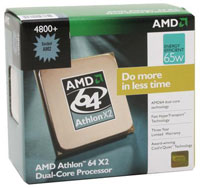 |
CPU performance can still be a factor in many games, particularly RTS games where lots of units might be in action at the same time, but graphics horsepower is still far more important in the majority of titles. We made a moderate upgrade to the processor selection, going with the Athlon X2 4800+. That should offer more than enough power for any current games, and it leaves us plenty of money to spend on the GPU. Overclocking is always an option, although most AMD AM2 processors seem to top out in the range of 2.6-2.8GHz so we would either go with a less expensive CPU for overclocking purposes or else simply spend the extra money in order to get a guaranteed minimum performance. If you want something faster than a 4800+ and you don't want to move to Core 2 Duo, the 5400+ is worth a serious look. Priced at $200, that processor comes with 1MB of L2 cache per core and a default clock speed of 2.8GHz - basically what used to be the $1000 FX-62. Just don't expect it to greatly improve your gaming performance except at lower resolutions/detail settings.
 |
For the motherboard, looking at prices we decided the ability to support dual X16 PCI-E slots was a reasonable addition, as the price isn't much higher than the dual X8 PCI-E alternatives. The nForce 590 SLI chipset has been well-regarded since its launch last year, and prices on such boards have dropped substantially. This also gives us the option to move up to SLI graphics cards in the future to improve performance, and while that tends to be beyond the realm of midrange computers it's not inconceivable that some people will want to spend a couple hundred dollars a year from now to improve performance. Taking a look at the current 590 SLI motherboard offerings, EVGA comes out on top with some of the best features while maintaining the lowest price - under $100 after rebate! The EVGA motherboard is actually the same reference design as the Foxconn nForce 590 SLI board that garnered our Silver Editors' Choice award last year, right down to the inclusion of FireWire 1394b support, and it costs $35 less than the Foxconn board before rebates.
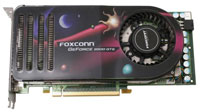 |
As we mentioned, the graphics card is going to be the primary concern in just about any gaming system. Right now, without blowing our budget by moving up to the 8800 GTX, the GeForce 8800 GTS is the most reasonable solution. Having settled on that chip, you then need to decide whether you want to get the more expensive 640MB version or stick with the basic 320MB offering. There are several games out that are using a lot of textures, which can start taxing 512MB cards, so opting for the larger memory version seems to make the most sense in terms of serious gaming. It's also a lot easier to find factory overclocked cards in the 640MB models without paying too much of a price premium. The Foxconn 8800 GTS comes clocked at 575/1800 (stock is 500/1600) and after rebates it ties several other cards as being the cheapest 8800 GTS 640MB. Lowest priced card with higher factory clock speeds? We'll take it, especially considering all of the GeForce 8800 cards use the same NVIDIA supplied circuit board, so the only real differences will be factory clock speeds, warranty/support, and potentially modified cooling solutions. XFX and EVGA may come with better warranty policies, but Foxconn certainly isn't a bad company to deal with in our experience.
Before you rush out and purchase this particular graphics card, however, it is worth noting that AMD's new Radeon X2900 XT/XTX cards are scheduled to launch in the next month. The rumors have it that these cards will offer performance better than the 8800 GTX at prices starting around $400 for the XT model. Whether or not the availability and drivers are going to be up to snuff is a complete unknown - NVIDIA is still working on G80 driver issues, particularly in regards to Windows Vista, and we don't have any DirectX 10 enabled games yet - but it certainly wouldn't hurt to wait another month and see what happens. Should you choose to get one of the new AMD graphics cards, you might also want to skip the EVGA SLI board and pick up an ASUS M2R32-MVP 580X CrossFire enabled motherboard instead.
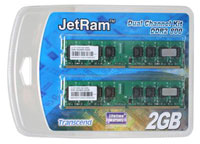 |
For the memory, this time we did upgrade to 2GB of RAM. We didn't bother with anything fancy - 5-5-5-12 memory is only a few percent slower than 4-4-4-12 memory and costs quite a bit less - and again we are quite pleased to see that memory prices have dropped a long way since the beginning of the year. Transcend JETRAM is one of the many memory providers that offers "average" performance. If you're looking to set speed or overclocking records, you could certainly spend more money and get RAM that is capable of running at much higher clock speeds with better timings, but for the cost you would be far better off spending the extra money on a faster graphics card or processor first. We generally only recommend exotic memory solutions for the high-end market.
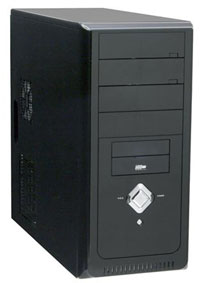 |
Most of the remaining components have received minor upgrades relative to our entry level configurations. The hard drive is slightly larger, we chose 5.1 speakers, and we selected a different case with a "more powerful" power supply. The power supply probably isn't all that great, but if you aren't going to push your system with overclocking, multiple graphics cards, or a bunch of hard drives the 500W PSU included with the Athenatech case will work fine.
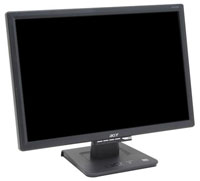 |
The display once again presented us with a dilemma: do we want to go with a higher quality offering or do we want a larger display? In reality, most of the 22" and smaller LCDs tend to have fewer features and lower quality. For example, TN panels are standard on every 22" LCD we've seen so far, and they are also used on most of the other smaller displays. It's possible to find S-PVA panels on some of the 20" displays, but you will end up paying more than the 22" Acer that we selected. The AL2216W is a decent quality display, and the price makes it particularly attractive. Acer also has a newer and slightly less expensive AL2223W offering, although that is a 6-bit panel that approximates 16.2 million colors via dithering whereas the AL2216W is an 8-bit panel.
















46 Comments
View All Comments
yyrkoon - Saturday, April 21, 2007 - link
I agree with Jarred somewhat, but I have always said: 'buy now, with upgrades in mind'. Meaning, if you are tired of waiting to upgrade, buy what you want now , based on what is currently availible, and make sure the components you choose, will give you as much flexability towards upgrading a CPU here, more memory there, a video card a year down the road, whatever.It has been sometime now, since you could buy parts, without feeling like you just wasted a wad of cash on something that is going to be outdated in ~6-12 months. SO . . . buy with upgrades in mind, which means everything I have said above, and 'research' on your behalf, since you are the only one who really kows what you really want/need.
JarredWalton - Friday, April 20, 2007 - link
I always tell people to wait until they don't feel they can wait any longer, because new products are always coming out. Intel will be releasing some new Core 2 models in the near future, cutting prices, etc. and AMD will be coming out with Barcelona at some point (sounding like maybe late July?) The same goes for NVIDIA and AMD/ATI. If you're ready to upgrade/buy and you need something right now, though, Then go ahead and take the plunge. I don't think Penryn is going to be as big a deal as the initial Core 2 launch - slightly faster, slightly cheaper, but nothing revolutionary (though the video encoding numbers are looking promising, and overclocking as well should be improved at least slightly).MarxMarvelous - Friday, April 20, 2007 - link
Nice article - just in time for me to start prepping for a new rig...In any case a couple of comments:
1) Re: Vista Drivers.
Personally I haven't had any issues at all with driver support. I'd say unless you have components that are 4+ years old you will be fine, especially if you are buying a brand new system.
2) Optical drive
Noticed that you are recomending a Pioneer across the board which is EIDE. SATA DVD-R drives are now around the same price and seem like a better choice.
http://www.newegg.com/product/product.asp?item=N82...">http://www.newegg.com/product/product.asp?item=N82...
JarredWalton - Friday, April 20, 2007 - link
Thanks for the heads up - I may have to get one of those for my next PC purchase. But I didn't recommend Pioneer across the board (Lite-On in the cheaper builds to save a few dollars). Personally, I just don't do enough burning to care all that much about optical drives these days. All of the drives I have work fine, and I haven't had a drive fail in a few years (knock on wood).As for Vista drivers, there are still games that have performance issues under Vista (OpenGL especially), and certain things like SLI support on various cards (6000 and 000 GeForce lines) is still missing last I heard. I know most game issues can be worked around with a bit of effort (I think there are some registry tweaks to get STALKER to run properly, for example), but that's not the same as just *working* properly. I don't like having to jump through hoops to get CrossFire or SLI to work, and I don't like constantly putzing about trying to get games to run properly. For those reasons, I'm generally shying away from Vista still. I also have at least one system that totally locks (and then BSODs on restart after the failed install) if I try to install the latest (or any version actually) X-Fi drivers, so I have to use integrated audio in Vista on that setup. I pulled the card and put it in a different system now.
It seems to me that Vista is fine for some people, but the more you push your system and applications, the more high-end your setup, the more problems people seem to have. It's mostly usable, but it still has a few more quirks than XP in my limited experience. Maybe in about six months I'll be ready to switch.
MarxMarvelous - Friday, April 20, 2007 - link
Whoops, I didn't look through all the configs so I didn't spot the Lite-On (I've pretty much decided on switching away from AMD :). Anyhow, I also don't do a whole lot of burning but was just happy to be able to switch away from those fat EIDE cables and also be a little more future proof in case I ever want to switch the drive to a mobo with no EIDE connectors (will happen someday!).As for the Vista drivers, yeah it sounds like you're definitely more on the edge (SLI/Crossfire, OpenGL, X-Fi, etc). All of the systems I'm running it on are pretty standard (either laptops or desktops using onboard audio + single video card). All have been pretty rock solid thus far (knock on wood).
ancolboy - Friday, April 20, 2007 - link
The article said it support 1333MHz, how so? MSI website never mention it. The article also said the board could allow overclock, but the board doesn't even allow user to change FSB frequency. Or did I miss something?JarredWalton - Friday, April 20, 2007 - link
Sorry - got some products mixed up and it didn't all come out right. The MSI board doesn't OC at all right now, you're right. I was debating between that and the Gigabyte S2 board, but the text didn't come out right. I've edited this now.ancolboy - Friday, April 20, 2007 - link
Thank you for clarifying it fast :) I am considering between intel or amd solution right now. Torn between performance and price, to top it up, linux compatibility.Hoping Gary's matx roundup (still writing it I guess) could help me decide which way to go.
JarredWalton - Friday, April 20, 2007 - link
If you want OC and performance, I'd say the Gigabyte S2 is probably the best bet. If you're okay with less performance, I'd seriously consider the Biostar and ASUS 690G options with an X2 processor. Quite handy with the HDMI ports as well, if that's something you're interested in.najames - Friday, April 20, 2007 - link
I would swap out the Asus M2A-VM for the Biostar TA690G for a few bucks more. It is a solid overclocker/undervolter if you are inclined. The layout on the Biostar allows for wide passive cooled video cards too, plus you can still use both PCI slots. I am actually strongly considering buying a second TA690G setup.I'd also add 2GB of RAM for only $35 more.